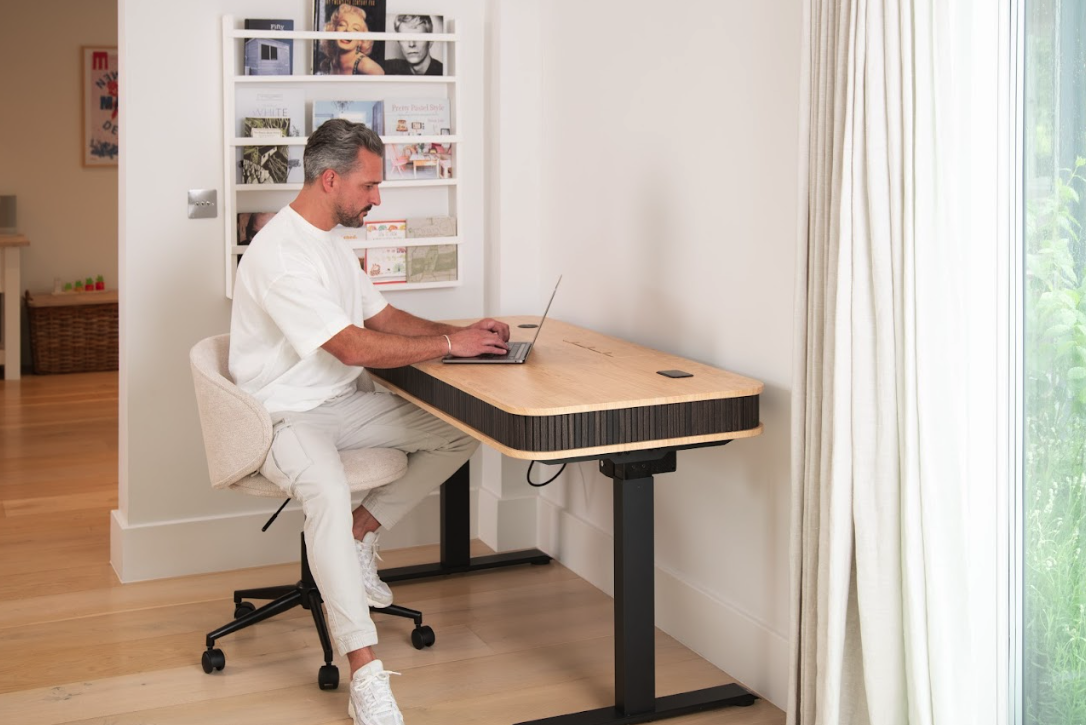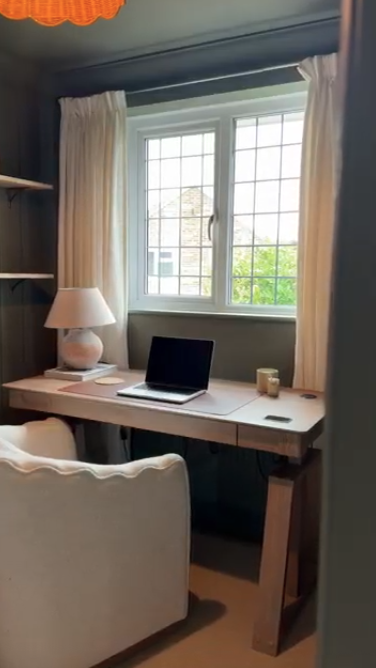Smart desk routines: make your workspace work for you


Mornings set the tone, so keep things friction‑free. Dock your phone on the wireless charger, park the laptop on the clean side of the desk, and tap your first memory preset to stand. A minute of standing while everything wakes up beats launching straight into the chair slump.
Lights on, inbox closed. Open your day with a five‑line plan: three priorities, one admin task, one “nice if there’s time.” You’ll sit with intent instead of defaulting to busywork.
Tip: Put a coaster where your mug should live. It’s a tiny cue that keeps spills away from tech and stops cables doing the tango.
Focus is a setting, not a mood. Give it a physical start. Lower to your smart desk sitting preset, slide the chair in, and put everything that isn’t today’s task out of arm’s reach. Headphones on. Notifications off. Twenty‑five minutes on the clock. When the timer ends, stand up, shake the legs, and walk to the other side of the room before you earn a scroll.
Cable sanity matters here. Route power once, properly, and forget it: laptop into a single hub, hub into the desk’s ports, excess length tucked out of sight. The calmer your surface looks, the calmer your brain feels.
Standing all day isn’t virtuous; switching is. Aim for a sit:stand rhythm that suits you - something like 45:15 across the morning, then 30:15 when the post‑lunch slump hits. Feet shoulder‑width, weight shifting gently, shoulders relaxed. No flamingo stances. No heroics. Just movement.
Build tiny anchors: every time you hop on a call, rise to your standing preset. Every time you hit send on a chunky deliverable, reward yourself with a sit and a glass of water. Behaviour sticks when it’s tethered to existing habits.

Bad framing makes great ideas look average. Save a camera‑ready preset that sets your eye‑line a touch above lens height. Check the background once (tidy, neutral, you - not a laundry memoir) and keep a soft desk light handy for grey UK afternoons. Before you join, drop non‑call apps, close the twelve tabs, and breathe for five seconds. It shows.
Mic picks up thuds? Pop a desk mat under the keyboard. Echoey room? A throw over the chair back does more than you’d think.
Low batteries are attention vampires. Give every device a permanent home: phone on the wireless charging spot, laptop on one cable, watch/earbuds on a small tray by the hub. At the end of the day, everything returns to base. In the morning, everything’s topped up. Less fiddling, more doing.
While you’re at it, label the underside of the desk where each cable runs. Future‑you, crawling under there on a Thursday, will be delighted.

Shut down with the same respect you start with. Clear the surface, park the chair, return the desk to a low evening preset so it doesn’t loom in your bedroom, and write tomorrow’s top three. Devices on charge, tabs closed, door (literal or mental) shut.
If you work in a shared space, this is where a smart desk shines: press, tuck, done. Your office disappears and your home gets its room back.
Keep it simple with three named settings you’ll remember:
Names matter. They turn buttons into behaviours.
How long should I stand at my smart desk?
There’s no medal for endurance. Cycle little and often - short, regular stand sessions beat heroic stints.
What’s the best time to use presets?
Tie them to moments you already have: start of day, start of calls, start of deep‑work blocks.
Do I need loads of accessories?
No. A light, a mat, tidy cables, and your smart desk memory buttons will take you a very long way.
Which smart desk would you recommend?
Our best seller is the Nora Desk, but if you need something to fit into those tight spaces, then the Gino Mini is a popular choice.
Dock your phone on the wireless charger, place your laptop on the “clean” side, then hit your first memory preset to stand. Spend a minute standing before you sit, and plan your day with a five-line list (three priorities, one admin task, one bonus).
Switch to your sitting preset, slide in your chair, move unrelated items out of reach, activate a timer (e.g. 25 minutes), silence notifications, then when the timer ends, stand, stretch, and reset.
Alternate regularly rather than “standing all day.” Try something like 45 minutes sitting / 15 minutes standing in the morning, then 30:15 in the afternoon. Use cues (e.g. calls, sending big emails) to trigger height changes.
Create three named presets: one for upright “morning mode,” one for seated “deep work,” and one for “camera ready” (aligning eye level with the lens). Use these routines so hitting a button becomes habit, not just a convenience.
Clear your surface, park your chair, return the desk to a lower preset so it isn’t looming, put devices back on charge, close tabs, and write your top three tasks for tomorrow before stepping away.